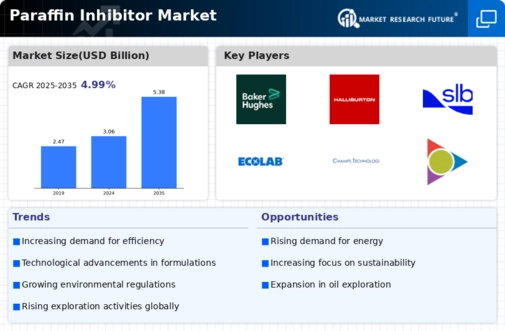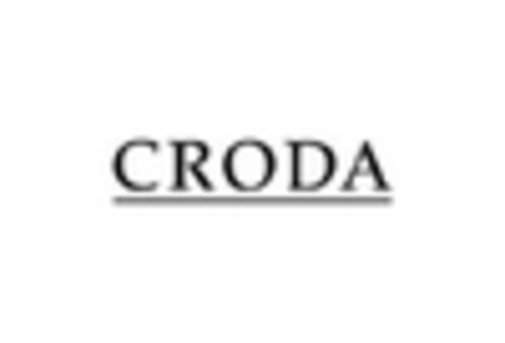Rising Demand for Oil and Gas Production
The Global Paraffin Inhibitor Market Industry experiences a notable surge in demand driven by the increasing oil and gas production activities worldwide. As oil extraction becomes more complex, the need for effective paraffin inhibitors to mitigate wax deposition in pipelines is paramount. In 2024, the market is projected to reach 3.06 USD Billion, reflecting the industry's response to the challenges posed by paraffin formation. This demand is expected to grow as production techniques evolve, necessitating advanced chemical solutions to enhance flow assurance and operational efficiency.
Regulatory Compliance and Environmental Concerns
Regulatory compliance and growing environmental concerns are pivotal drivers in the Global Paraffin Inhibitor Market Industry. Governments worldwide are implementing stricter regulations regarding chemical usage in oil and gas operations, prompting companies to adopt paraffin inhibitors that meet these standards. This shift towards compliance not only ensures operational legality but also addresses environmental sustainability. As operators seek to align with these regulations, the demand for advanced paraffin inhibitors that are both effective and environmentally safe is likely to increase, fostering market growth.
Growing Focus on Enhanced Oil Recovery Techniques
The Global Paraffin Inhibitor Market Industry is significantly influenced by the growing focus on enhanced oil recovery (EOR) techniques. As conventional oil reserves diminish, operators are increasingly turning to EOR methods to maximize extraction from existing fields. Paraffin inhibitors play a crucial role in these processes by preventing wax buildup that can hinder production. The anticipated compound annual growth rate (CAGR) of 5.27% from 2025 to 2035 highlights the market's potential as EOR techniques become more widely adopted, driving the need for effective chemical solutions.
Technological Advancements in Chemical Formulations
Technological innovations in chemical formulations significantly influence the Global Paraffin Inhibitor Market Industry. The development of more effective and environmentally friendly paraffin inhibitors is becoming increasingly prevalent. These advancements not only improve the performance of inhibitors but also align with global sustainability goals. As a result, companies are investing in research and development to create formulations that are both efficient and compliant with environmental regulations. This trend is likely to drive market growth, as operators seek solutions that minimize environmental impact while maximizing production efficiency.
Increasing Exploration Activities in Emerging Markets
The Global Paraffin Inhibitor Market Industry is positively impacted by the rising exploration activities in emerging markets. Countries in regions such as Africa and South America are witnessing increased investments in oil and gas exploration, leading to a heightened demand for paraffin inhibitors. These regions often face unique challenges related to wax deposition, making effective inhibitors essential for successful extraction. As exploration continues to expand, the market is anticipated to grow, with projections indicating a market value of 5.38 USD Billion by 2035, driven by the need for reliable flow assurance solutions.


























Leave a Comment